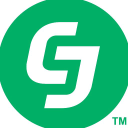How We Grew Our Personal Finance Blog To $2M/Year
Hello! Who are you and what business did you start?
My name is Jeff Proctor, and I am the co-founder of DollarSprout.com, a personal finance blog geared towards millennials who are interested in making and saving extra money.
Our revenue model is 100% focused on affiliate marketing. For those unfamiliar, this is when a publisher earns a commission on each sale or lead generated from their referral links.
For example, let’s say we have an article that teaches a reader how to get better about saving money. Within that article, we might mention a banking app that could help them achieve their savings goal faster. If a reader signs up for the app through our site, we earn a small commission (at no expense to the reader).
It took us over a year to start earning any meaningful revenue, but fast forward to today (4 years after starting), and DollarSprout is on pace for over $2M in revenue for 2019.

What's your backstory and how did you come up with the idea?
Growing up and even in college, I had no desire to ever become an entrepreneur. It wasn’t until my very first job out of school that I realized “Woah, I really don’t like working for someone else”.
I was working at a wealth management firm, where I helped a team of financial advisors with investing money for our clients. The job itself wasn’t horrible, but I didn’t like certain parts of the work environment and thought I could do things better on my own. Meetings, difficult coworkers, meaningless processes … they weren’t for me.
I was 25 when I left my fulltime job. I had saved up a little over $20,000, which I figured would last for about a year. It lasted for 9 months. I ended up having to go back to work because I was dead broke.
When I decided I wanted to build my own online business, the original idea I had was to create a subscription-based investing website. I, along with my business partner and long-time friend Ben Huber, planned on researching stocks and sharing our “trade secrets” to our paying subscribers.
One of the biggest mistakes Ben and I made was never validating the idea before deciding to go all in. In fact, when I quit my job in August 2015 to pursue entrepreneurship, we had 0 audiences and 0 revenue. Don’t make the same mistakes we did!
As it turns out, our business today looks nothing like what we originally planned on it being. All of our content is free, our readers never pay us a dime, and we don’t even have display ads on the site. Through trial and error, we found our stride in affiliate marketing and eventually became laser-focused on that as our sole business model.
I was 25 when I left my fulltime job. I had saved up a little over $20,000, which I figured would last for about a year.
It lasted for 9 months.
I ended up having to go back to work because I was dead broke. Persistence (and realizing it was time to pivot) finally paid off, and about 10 months after going back to work, I was able to leave again. It’s been about 2 years since I left, and I am optimistic that this time it’s for good.
Take us through the process of designing the site.
Since we didn’t sell any physical products, our first “prototype” was simply our website, which was under a different brand name at the time (we didn’t rebrand to DollarSprout until October 2017).
Here is what the site looked like during our very first week:

It was glitchy, ugly, and had very little content. We also didn’t have a way to collect payments from our subscribers.
Ben and I didn’t know much about web design at the time, so we used GoDaddy’s website builder tool.
Everything felt like a struggle. Our logo wouldn’t fit, there were blocks of text overlapping each other all over the place, and our site wasn’t even close to being mobile-friendly. It was a mess!
From Day 1 and even today, our business is a work in progress.
Describe the process of launching the business.
The process of “launching” actually began about 8 months before I quit my job. The biggest thing for me at the time was making sure that I had enough money saved up to go without a paycheck for a while.
Once my mind was set on leaving, I saved as much money as I possibly could. I also applied for a few credit cards while I was still employed just in case I needed the buffer later on.
I don’t think there is any way I/we could have learned these lessons without making the mistakes ourselves. It’s not like reading a how-to article would have necessarily made everything easier; we had to learn things the hard way.
The nice thing about the business model that Ben and I had our sights set on was that it’s extremely low overhead. Other than the cost of hosting and our site theme, we incurred very little cost over the first year. For the small expenses that did pop up, Ben handled most of them since he was still working full time as a Registered Nurse.
Of course, the drawback to a low overhead model means that it’s also low barrier to entry and we were somewhat fooled into thinking that would make things easier. Any business endeavor is going to be difficult to get up and running!
Our first few months after the site was live was spent posting on social media (mainly Facebook and Twitter) and writing news-style blog posts on investing trends we were seeing. We didn’t have a clear strategy on how that would lead into sales; we simply thought “if we do this long enough, we will eventually breakthrough”.
The reality was much different. What we were doing just plain wasn’t working. It wasn’t a matter of volume or persistence.
It wasn’t until we tried switching things up that we started to see some meaningful traction. One of our first breakthroughs in terms of building an audience was Pinterest. Neither of us had ever used Pinterest in our personal lives, but we heard it was a great traffic source for a lot of blogs so we decided to give it a shot. Like any new platform, there is a bit of a learning curve, but once we got the hang of it we really saw an uptick in traffic.
We heard that “group boards” were very important for visibility at the time. This is basically where you can get access to someone else’s followers by being a contributor to one of their boards. Getting added to these boards was a laborious task that included an insane amount of manual, cold outreach.

Despite the uptick in traffic (around 20k page views per month), our sales were still sitting firmly at $0.
We noticed a lot of “bloggers” on Pinterest were using affiliate marketing and seeing some success. That led us down the path of finding financial companies that had affiliate programs and trying to incorporate some affiliate links into our content.
Our first “home run” article that did well on Pinterest and affiliate links was a listicle post that Ben wrote about different ways that people can make money from home. The original version of that post was single-handedly responsible for our first $500+ month. The article had roughly 50k pageviews in 2 months.
This article wasn’t published until almost a year into starting our business. Once we felt that first glimpse of success, though, we started to build on it.
Since launch, what has worked to attract and retain customers?
We built the foundation of our audience and business on social media (mainly Pinterest and Facebook), but the real key to our growth over the past year has been SEO.
Many SEOs try to overcomplicate things. Our strategy from the start has always been fairly straightforward:
- Create useful, keyword-oriented content that helps readers solve a problem
- Hustle and get the word out about your content (aka guest post, go on podcasts, network with journalists, etc.)
- Make sure you don’t have any glaring technical issues on your site
- Rinse and repeat, forever
It sounds simple, but this strategy has required thousands of hours of our time.
The affiliate marketing business model is almost entirely dependent on driving massive amounts of traffic. That’s always at the front of our minds whenever we undertake a new project, build our editorial calendar, etc.
What will people want to read? How can we help them and do a better job than our competitors? How can we effectively promote a financial product or service that makes a reader’s life easier?
These are the questions we are constantly asking ourselves. We’ve moved away from news or op-ed style content and now focus exclusively on writing content that helps our readers solve a problem.
Here’s an example of a page on our site that compares investing apps:

Since there is rarely a one-size-fits-all product for everyone, we try to match people up with what is best for them. In the example above, we have several categories: best overall, best for long term investors, best for real estate investors, best for crypto trading, etc. With that strategy, we’ve actually seen conversion rates go up.
That being said, the vast majority of our content isn’t monetized to the extent that our product recommendation pages are. Most of our stuff is just there to teach readers something new. We are here to build a brand, not just make a bunch of affiliate income.

How are you doing today and what does the future look like?
I’m very fortunate and grateful to say that DollarSprout is a profitable business.
Here is a graph that shows our revenue progression since Ben and I started the business in 2015:

At the time of this writing, we are just over $1.3M in revenue for 2019, and will likely break $2M for the year.
Here is our traffic for DollarSprout since late 2017:

Obviously, we are at the mercy of Google and various social media algorithms, but we have seen great growth over the past few years. Right now we are focusing on building out our editorial team and strengthening the quality of some of our older content.
Our affiliate income is fairly diversified across roughly 80 different advertisers, but our biggest income drivers at the present moment are companies that help our readers make money (places like Uber, Instacart, Postmates, etc.).
We’ve been heavily investing in other content verticals, like banking and stock investing, so we anticipate more income diversification over the next 6-12 months.
Through starting the business, have you learned anything particularly helpful or advantageous?
Nope.
Just kidding :)
I’ve learned a lot about myself throughout this journey of starting a business, and have made so many mistakes that I’ve lost count!
Starting a business without proof of concept? Check
Leaving my job with zero revenue coming in from the business? Check
Not making any adjustments during the first 6-9 months of zero revenue? Check
The list goes on and on.
But even though we’ve made all of these mistakes during the process of building DollarSprout into what it is today, I don’t think there is any way I/we could have learned these lessons without making the mistakes ourselves. It’s not like reading a how-to article would have necessarily made everything easier; we had to learn things the hard way.
One of the biggest things I have learned is to keep trying everything until you find something that works. Something you are good at. Once you find it, drop everything else and build on it like crazy.
In our case, we sort of stumbled upon affiliate marketing. Even though we had no clue what we were doing at the time, that small bit of success is sparked us to dig a little deeper and go down that path… and it was a great decision.
What platform/tools do you use for your business?
- CMS: Wordpress (our current theme is custom)
- Email Marketing: Convertkit
- Email Capture: HelloBar
- Push Notifications: Subscribers
- Communication: Slack, Zoom, Loom
- Project Management: Asana
- SEO: Ahrefs, SEMrush, Keywords Everywhere, KWFinder
- Accounting: Quickbooks
- Human Resources/ Payroll: Gusto
- Affiliate Networks: Impact, CJ, FlexOffers, iGain, Aragon, AdBloom + more
What have been the most influential books, podcasts, or other resources?
I really don’t read a lot of books, but one book that has stuck with me for some reason is Grant Cardone’s 10X Rule. That book really opened my eyes to the benefits of thinking BIG for your business.
Advice for other entrepreneurs who want to get started or are just starting out?
Just start.
Your first attempt at whatever you are trying to do isn’t going to be pretty, so just get on with it. Don’t spend forever perfecting your idea or planning out every detail; just get something out there in the marketplace and see how people respond. From there, keep making your product better.
Take advantage of the comforts of fulltime employment for as long as humanly possible before you decide to take the leap into running your business full time. There will be many late nights and early mornings, but I can tell you from experience that that is nothing compared to the stress you will feel if you jump into your business right away with zero incoming revenue.
Are you looking to hire for certain positions right now?
We are not hiring at the moment, but that will hopefully change over the next few months.
Where can we go to learn more?
- Website: www.dollarsprout.com
- Facebook: dollarsproutblog
- Pinterest: dollarsproutblog
- Twitter: DollarSprout
- YouTube: UCwGoMwnGuOEY8J1_p48q_qA
- Jeff’s Linkedin: feed
We also run a separate Facebook group for bloggers and entrepreneurs under our separate brand, Breaking The One Percent.

Download the report and join our email newsletter packed with business ideas and money-making opportunities, backed by real-life case studies.

Download the report and join our email newsletter packed with business ideas and money-making opportunities, backed by real-life case studies.

Download the report and join our email newsletter packed with business ideas and money-making opportunities, backed by real-life case studies.

Download the report and join our email newsletter packed with business ideas and money-making opportunities, backed by real-life case studies.

Download the report and join our email newsletter packed with business ideas and money-making opportunities, backed by real-life case studies.

Download the report and join our email newsletter packed with business ideas and money-making opportunities, backed by real-life case studies.

Download the report and join our email newsletter packed with business ideas and money-making opportunities, backed by real-life case studies.

Download the report and join our email newsletter packed with business ideas and money-making opportunities, backed by real-life case studies.


















